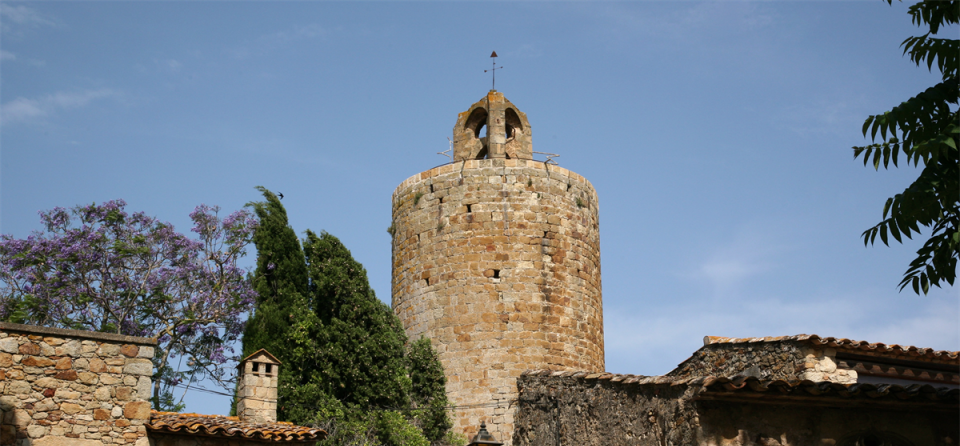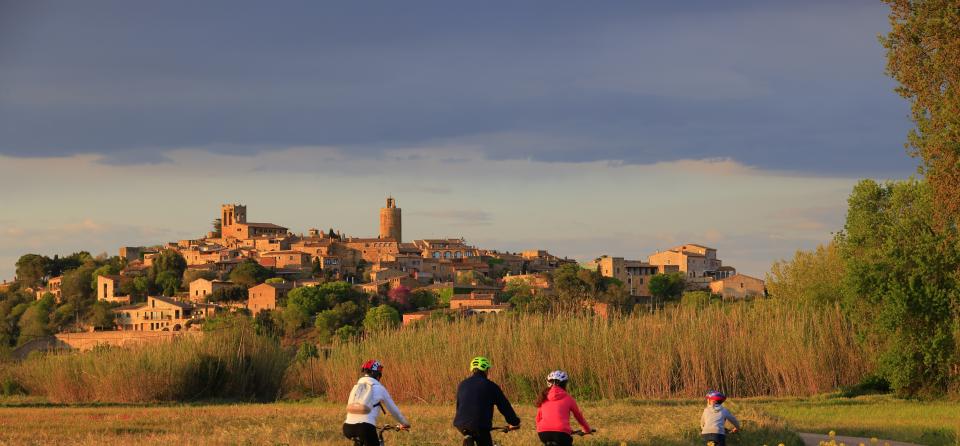Pals
Member of the Spanish National Network
PRESENTATION
Located right in the middle of the Empordà region and consisting of three districts (Pals, Masos de Pals and Platja de Pals), the town offers visitors a wide range of possibilities to enjoy all year round:
- One of the best-known and most visited villages in the region thanks to the beauty of its landscape and its rich legacy of history and heritage.
- One of the most beautiful and best preserved Gothic sites in the Empordà region. Pals has a remarkable historic heritage. When strolling through in its walled enclosure, you can sense the magic in the stones that are practically unchanged by the centuries. The Romanesque, Gothic and Baroque styles all combine beautifully here. You can admire the delicate craftsmanship of the stonemasons and blacksmiths in the windows and iron grilles.
- A large beach ideal for families and for water sport lovers.
- A natural environment with wetlands and rice fields that are great for going for walks or bicycle rides or simply for observing and enjoying the landscape.
And a top quality tourist offer with hotels, campsites, apartments, Bed & Breakfasts, rooms, rural tourism, restaurants and typical shops, golf, tennis, etc.
Pals fully identifies with the principles of the ‘Slow Movement’ and, together with the municipalities of Begur, Bigastro, Lekeitio, Mungía, Palafrugell and Rubielos de Mora, is one of the founders of the Cittaslow Association – Network of Towns for Quality of Life in Spain.
A “slow” town means a lot more than just being a “quiet town”. It implies a series of intangible aspects that derive from an attitude that has to embrace all the facets of the territory. It involves a special approach to observing and living life that favours the inhabitants who strive daily to preserve the landscape, customs and traditions, local cooking and local produce ... without standing in the way of progress or new technologies.
An approach to life that tourists and visitors and tourists in our village can appreciate.
HISTORY AND TYPICAL PRODUCT: RICE OF PALS
Pals has been associated with rice for a long time. Rice became an important crop of the town in the 15th century, when there was already a mill that can be dated to 1452.
From the beginning, the cultivation of this crop became a feature of the town, and it has continued to be through good times and bad.
At the start of the 20th century, using modern methods to keep the water circulating and constantly changing to prevent it from stagnating. The application of these new techniques meant that rice became a viable crop once again from 1908 onwards, reaching a peak in the period after the Civil War which would endure until the middle of the 20th century.
At the end of the 1950s and start of the 60s, the agricultural sector entered into sharp decline as the tourist and service industries emerged. Working conditions in the fields were very hard and most of the population gave up their agricultural activities to work in the new economic sector that was just taking off. Even so, the cultivation of rice was never completely abandoned, and mechanization enabled some farmers to continue growing rice to the present day, and there are still twenty or so families who make their living from growing this cereal.
TRADITIONAL RECIPE:
Arròs de Pals a la cassola (rice casserole)
Ingredients for 4:
400 g of Pals rice
400 g of cuttlefish
8 king prawns or prawns
150 g of clams
200 g of chicken
200 g of rabbit
8 small sausages
100 g of peas
2 chopped onions
3 ripe tomatoes
4 chopped cloves of garlic
Parsley
1½ litres of fumet (fish stock)
Preparation:
To make the fumet you will need water, fish and the head of a monkfish. You could also use scorpion fish, gurnard or rock fish in general. Add a drizzle of oil, a leek, a carrot and an onion. Cut everything up into small cubes and put it on to boil.
In an iron casserole fry the king prawns in some oil and then take them out and place them to one side. In the same oil, fry the chicken, sausages and rabbit and then take them out and put them to one side. Add the garlic and the onion to the oil and when they are well cooked, add the grated tomato. Leave them to cook for a while. Then add the cuttlefish and leave it to cook for about 15-20 minutes, adding a little of the fumet so that it cooks better.
When the cuttlefish is cooked, add the meat, the sausages and the peas, a little stock and some salt. Also add the clams, the rice and the rest of the stock. When the rice is half cooked, add the king prawns or prawns and stir so that it does not catch.
When the Pals “arròs a la cassola” is ready – enjoy your meal!
MAIN EVENTS:
- Gastronomic Promotion Pals and its Rice Cuisine
Since 1994, the cycle of activities centred on rice starts with the Gastronomic Campaign of Pals and Rice Cookery which is organised between the Town Council of Pals, the restaurants of the town and the rice mills. The aim of this gastronomic event is to promote and inform the public about the quality of this product so important to the region.
In this campaign, which takes place in the spring, the restaurants of the town that take part offer their clients a menu featuring a rice stew made with Pals rice as its main course, with the starters and desserts that each restaurant normally serves.
- The traditional sowing and peaping of the rice
The tradition of Sowing the Rice is celebrated every year in the town during the month of June. The senior farmers of the town offer the audience a demonstration of how rice used to be planted manually standing in water, prior to the arrival of mechanisation.
This event, which is recommended for all the family, is accompanied by a typical country breakfast and a series of activities that reflect the authentic nature of rural life centred on rice farming.
The rice that is planted manually in June is harvested in October by the same method: the senior farmers of the town show how this was done prior to mechanisation, cutting the stalks and making stacks and placing them on the wooden “barge” that was pulled by a horse. The festivities end with a public meal of rice.
- At the end of July the candle night takes place.
The old centre appears illuminated under the light of thousands of candles and you can also enjoy different musical performances and shows throughout the entire itinerary.
OTHER:
In the old quarter of the town, has been designed and signposted an accessible itinerary for people with disabilities.
REPRESENTATIVES OF CITTASLOW:
- Mayor:
Mr. Carles Pi i Renart
Plaça Major, 7
17256 Pals
Tel. 00 34 972 63 61 61 / alcaldia@pals.cat
- Cittaslow contact person:
Mrs. Rosa Maria Pedret Morales
C. de l’Hospital, 22
17256 Pals
Tel. 00 34 972 63 73 80 / rosa@pals.cat
Url from the official website of the city: www.visitpals.com / www.pals.cat



